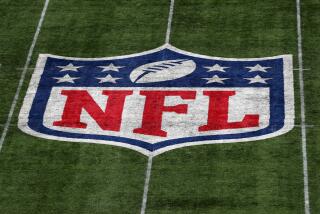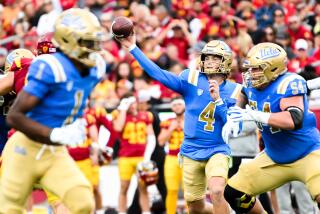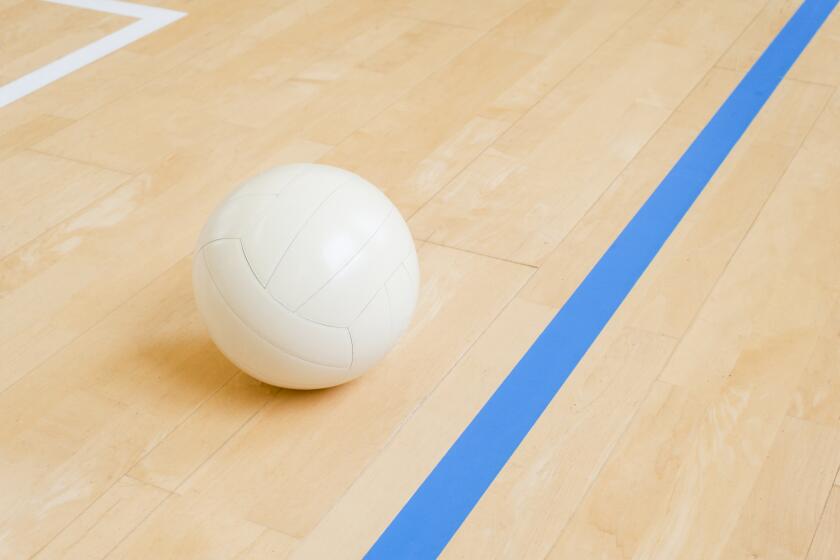Junior Seau had degenerative brain disease when he committed suicide
Junior Seau, among the greatest linebackers in NFL history, suffered from degenerative brain disease when he fatally shot himself in May, the National Institutes of Health said in a study released Thursday, another blow to a league whose former players say they were never warned about the dangers of head injuries.
More than 2,000 former players are suing the NFL, contending the league never properly addressed the problems with head injuries and in many cases withheld information about the long-term effects associated with them.
Tissue samples of Seau’s brain showed the 12-time All-Pro player had chronic traumatic encephalopathy, or CTE, a progressive disease diagnosed after death.
CTE is a fairly new name for a degenerative brain syndrome caused by mild, repetitive brain trauma. Anatomically, it is characterized by clumps of a protein called tau that build up in brain cells, damaging and even killing them, said Dr. Ann McKee, a neuropathologist at the VA Boston Healthcare System and Boston University who studies CTE.
Behaviorally, CTE is linked to an array of symptoms including mood swings, depression, irritability, insomnia and poor attention — and, in later stages, to memory problems and dementia, McKee said.
McKee was first author of a December report that found signs of CTE in 68 out of 85 brains of adult males — 64 of them athletes — with a history of repeated mild traumas to the brain. One of the early brain regions affected is the locus coeruleus, known to be linked to depression.
“That would be one of our hypotheses, that damage to these centers in the brain may provoke depression in these individuals,” McKee said.
Similar brain injuries were discovered in the autopsies of former players who also killed themselves: Dave Duerson, a onetime Chicago Bears defensive back who shot himself in the chest, specifically so that his brain might be studied; and Andre Waters, a former Philadelphia Eagles defensive back who shot himself in the head.
Seau died at his beachfront home in Oceanside on May 2, having shot himself in the chest. Two months later, his family allowed researchers to study his brain.
“While the NIH’s findings have provided a measure of comfort, we remain heartbroken that Junior is no longer with us,” his family said in a written statement, “and are deeply saddened to receive confirmation that he suffered from such a debilitating condition.”
The findings were jarring to former NFL linebacker Gary Plummer, who played with Seau for four seasons with the San Diego Chargers.
“At the time when he killed himself, I was thinking [concussions] contributed maybe 10% to 20% to what he did,” Plummer said. “Now, you have to say to yourself: Was it more than that? Was it 25% to 50%? You just don’t know.”
Plummer is a plaintiff in one of more than 80 concussion lawsuits against the NFL, legal actions that could potentially devastate a league that generates $9 billion in annual income. Other plaintiffs include Super Bowl-winning quarterback Jim McMahon of the Bears, and the family of former Atlanta Falcons safety Ray Easterling, who shot and killed himself two weeks before Seau.
“I used to think, you made your bed, just lay in it,” Plummer said. “But you start thinking, wait a second, these guys [in the league] were not forthcoming ever when I had a concussion. They’d put up two fingers and say, ‘How many fingers do I have up? OK, get back in the game.’ So it makes you think, makes you say to yourself, ‘What were these guys hiding? And did they know it?’”
CTE, though its recognition is growing, is still a somewhat debated condition, said Dr. Patrick Lyden, a neurologist at Cedars-Sinai Medical Center. For one thing, its frequency among football players is unknown because it is only diagnosable upon death through autopsy reports. It also is not yet clear what degree of trauma to the head is needed to set it off, Lyden said.
“It’s certainly real in the handful of cases that have been examined pathologically. It’s certainly real in Seau’s case — the changes are there in the brain,” he said.
But Seau, he added, “was an incredibly aggressive player — he would put his head down and drive his helmet into another player.”
The NFL said that the Seau finding underscores the need for additional research to better understand CTE, and that the league, working with the NIH and other leading organizations, is “committed to supporting a wide range of independent medical and scientific research that will both address CTE and promote the long-term health and safety of athletes at all levels.”
League spokesman Greg Aiello said NFL clubs have already committed a $30-million research grant to the NIH, and, along with the NFL Players Assn., plans to invest $100 million more for medical research on head injuries.
“We have work to do, and we’re doing it,” Aiello said.
It’s conceivable that damages as part of concussion lawsuits could soar into the billions of dollars. Even if the NFL were able to withstand that, lower levels of football, from Pop Warner through college, would be hard-pressed to cover the insurance premiums to keep programs going.
The resolution of head-injury cases could fundamentally change the sport, and not just the nation’s most popular professional sports league.
Already, the NFL has made significant rules changes designed to protect players from head injuries, and has increased the frequency and amount of fines issued to players who hit opponents in the head. The league is even flirting with the idea of taking kickoffs out of the game, reasoning that an inordinate percentage of injuries occur on that play.
The measures that have been taken are not uniformly embraced by fans, and in fact are derided by many as the watering down of the game. That surprises Orin Starn, professor of cultural anthropology at Duke University.
“One wonders what it would take to get America’s attention on this,” Starn said. “Boxing kind of got redefined from a mainstream American sport into something that a lot of Americans thought was too bloody and too brutal to sit down in the living room and watch with their kids. One wonders if this could happen with the NFL.
“Thirty years from now, will we wonder how it is that we could have taken such great pleasure in watching people hit each other at very high speeds, causing brain injuries that then lead to suicide and other things?”
More to Read
Go beyond the scoreboard
Get the latest on L.A.'s teams in the daily Sports Report newsletter.
You may occasionally receive promotional content from the Los Angeles Times.











